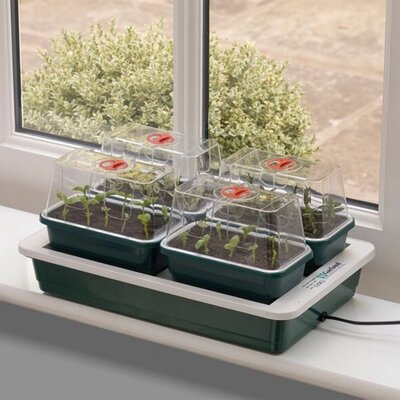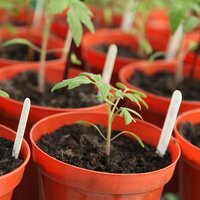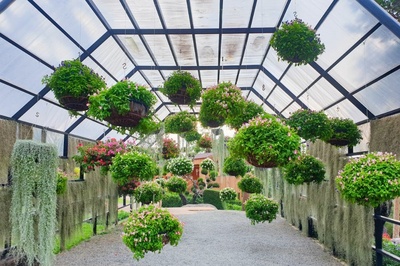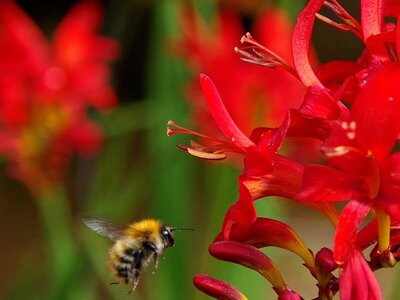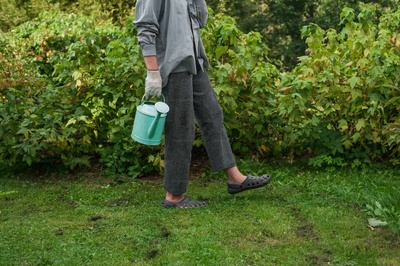There’s nothing quite like the taste of your own home-grown tomatoes, fresh-picked and still warm from the summer sun. You don’t even need a big garden to grow a tomato plant – many will grow happily in a pot on a sunny patio or balcony.

Choosing which tomato to grow
Tomatoes are divided into bush and cordon types. Bush tomatoes grow to a fixed height and then stop. They’re often easier to grow than cordon tomatoes, as they need little supporting and no pinching out of side shoots. Cordon tomatoes will carry on growing taller throughout the season, and need to be tied in to support canes or wires.
Tomatoes are also grouped into categories based on the size and shape of the fruits:
- Cherry tomatoes are small and round, ideal for salads and snacking.
- Plum tomatoes are oval and have few seeds, good for sauces.
- Salad tomatoes are round, typically between 5-7cm in diameter and are great all-rounders, perfect in sandwiches and salads or for cooking.
- Beefsteak tomatoes are huge and very fleshy, great for sauces and for slicing in sandwiches and hamburgers.

How to sow tomato seeds
Tomato seeds germinate easily indoors in pots on a sunny windowsill or in a greenhouse. They need a long growing season, so should be sown in early spring.
- Sow 1cm deep in pots filled with moist multipurpose compost or in seed trays. Cover the pots or trays with clear plastic bags and place in a warm, bright place.
- Once the seeds have germinated, remove the bags and allow the seedlings to grow on. Water regularly to keep the compost moist.
- When the seedlings are large enough to handle, transplant them into larger pots and grow on.
- Plant out in late spring or early summer after all risk of frost is past. Harden the plants off for two weeks before planting out, by placing the pots outdoors during the day and bringing them back in at night.
How to care for tomatoes
- Tomatoes need full sun and a fertile, moist but well-drained soil. They can be grown outside in a sheltered sunny spot or in a greenhouse.
- Water regularly to keep the moisture level in the soil consistent. Dry periods followed by heavy watering can cause fruits to split.
- Once the fruits start to form, feed fortnightly with a high-potash liquid tomato feed.
- Tie cordon tomatoes in to canes or support wires as they grow. Once they have produced 5 trusses of fruit, pinch out the growing tips two leaf trusses above the highest fruit truss.
- Pinch off the side shoots on cordon tomatoes. These are the small leafy shoots that appear in the angles where leaf trusses join the main stem. There’s no need to pinch off side shoots on bush tomatoes.
- Harvest tomatoes when they have developed a good colour and are slightly tender to the touch, but not soft.

Whether you’re growing vegetables from seed or planting seedlings, you’re sure find everything you need in our centre, so pay us a visit soon!

